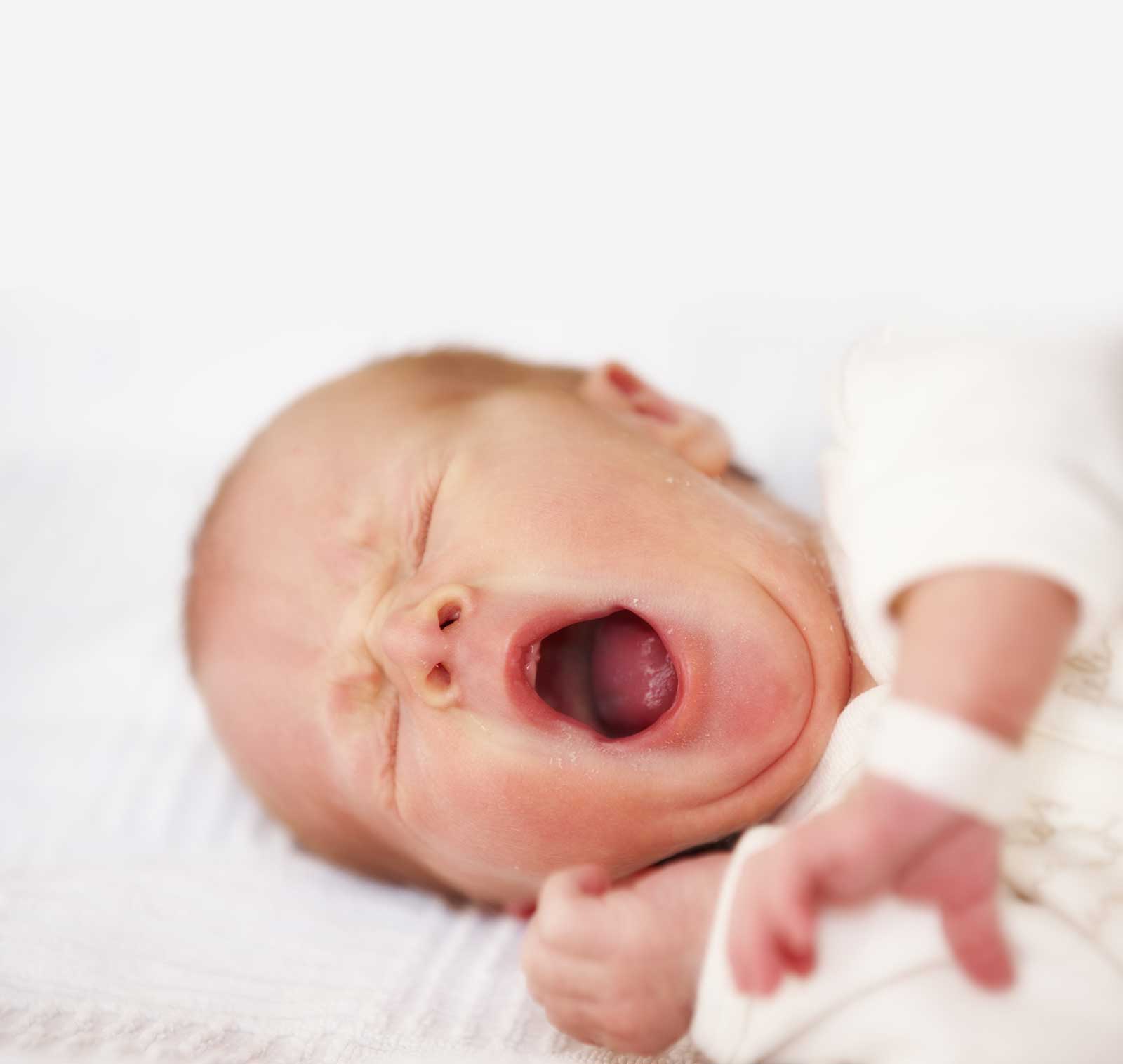Thrush is a yeast infection in the mouth that is very common in babies. It is not usually harmful and does not even bother most babies. However, some do seem to have some mouth irritation or pain and may not feed as well. The yeast can also infect the breast of mothers who are breastfeeding and cause discomfort and pain. Thrush is not contagious. Although it can go away on its own, it is usually best to treat it.
What are the symptoms?
- Thick white patches on the cheeks, tongue, roof of the mouth, and gums that look like cottage cheese. There may be a thin white coating on the inside of the lips.
- Patches will not rub off like milk will and if scraped off, may bleed slightly.
- A thin white coating on the tongue is normal in infants and is usually not thrush if it is just on the tongue.
- The baby may have some mouth pain, especially with feeding.
- Sometimes the baby also has a yeast diaper rash.
What causes it?
Thrush is caused by a yeast called Candida. Candida is normally found in the intestines and also in the vagina and does not usually cause symptoms or problems. Most newborns become colonized with it at birth or shortly afterwards. It can grow abnormally when the body’s natural defenses are damaged. The immune system of infants is immature and does not keep yeast from growing in the mouth very well. Yeast like to grow anywhere it is warm and moist, including the diaper area, especially in the skin folds. It can also grow in the skin folds of the neck and armpits.
How is it treated?
- It is treated with an antifungal medicine, most commonly nystatin liquid. The liquid is squirted with a dropper directly onto the gums, lips, and inside of the cheeks, where the white patches are. It is fine for the baby to swallow the medicine. Put it on slowly so it has more time to work. You can also use a cotton swab to “paint” the medicine onto the spots, but the dropper usually works better.
- Infants less than 1 month old use ½ mL each side of the mouth four times a day.
- Infants 1 month and up use 1 mL each side of the mouth four times a day.
- Use the medicine until all the white patches are gone for 2-3 days, which usually takes about 5-14 days.
- Don’t feed your baby right after using the medicine. Wait 15-30 minutes.
- Sterilize any pacifiers, bottles, nipples, and toys that go in the mouth after each use.
- If you are breastfeeding, after each feeding treat your nipples with miconazole or clotrimazole cream, available over the counter. Do not use ketoconazole cream. Before feeding, use olive or coconut oil to remove any remaining cream.
- An older treatment, gentian violet, can still be used and is available over-the-counter. It is applied once or twice a day. It is stains skin, lips, and clothing, and can be irritating or cause ulcers in the mouth. It can also be used on the nipples of breastfeeding women.
- Stubborn cases can be treated with an oral medicine, fluconazole, but because it has more side effects it is not used first.
How can I prevent it?
There is nothing you can really do to prevent it. Everyone has this yeast on their skin; most babies “catch” it from their mothers during birth because it is present in the vagina, or right after birth because everyone has it on their skin.
What to watch for: When should I seek further care?
- Poor feeding, dry mouth, no wet diaper at least every 6-8 hours.
- Fever, rectal temperature 100.4 or higher.
- Breast pain or burning sensation, or redness around the mom’s nipple and breast.
- Diaper rash
References
Pappas PG, Kauffman CA, Andes DR, et al. Clinical Practice Guideline for the Management of Candidiasis: 2016 Update by the Infectious Diseases Society of America. Clin Infect Dis 2016; 62:e1. PubMed


